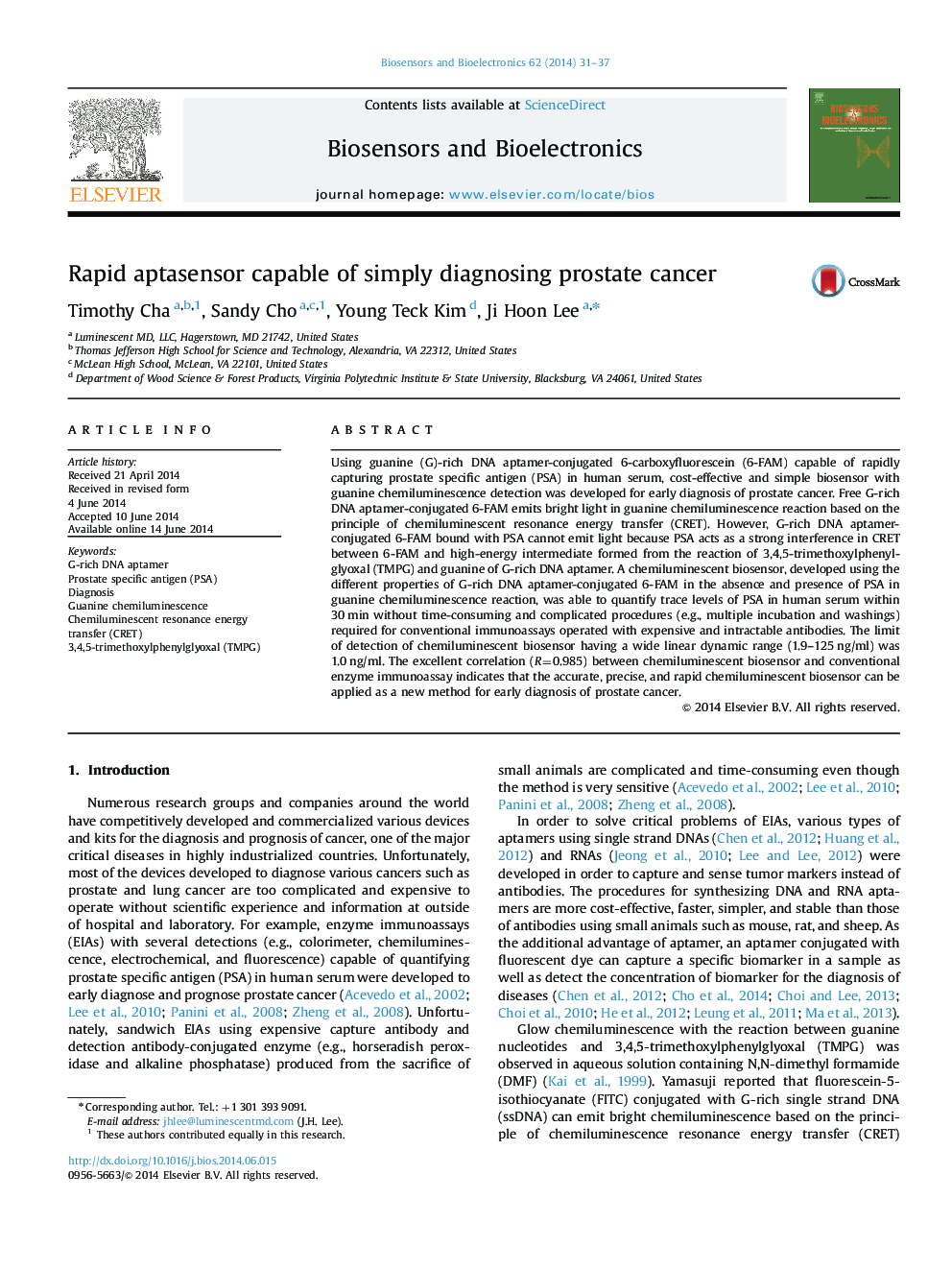| Article ID | Journal | Published Year | Pages | File Type |
|---|---|---|---|---|
| 7232906 | Biosensors and Bioelectronics | 2014 | 7 Pages |
Abstract
Using guanine (G)-rich DNA aptamer-conjugated 6-carboxyfluorescein (6-FAM) capable of rapidly capturing prostate specific antigen (PSA) in human serum, cost-effective and simple biosensor with guanine chemiluminescence detection was developed for early diagnosis of prostate cancer. Free G-rich DNA aptamer-conjugated 6-FAM emits bright light in guanine chemiluminescence reaction based on the principle of chemiluminescent resonance energy transfer (CRET). However, G-rich DNA aptamer-conjugated 6-FAM bound with PSA cannot emit light because PSA acts as a strong interference in CRET between 6-FAM and high-energy intermediate formed from the reaction of 3,4,5-trimethoxylphenylglyoxal (TMPG) and guanine of G-rich DNA aptamer. A chemiluminescent biosensor, developed using the different properties of G-rich DNA aptamer-conjugated 6-FAM in the absence and presence of PSA in guanine chemiluminescence reaction, was able to quantify trace levels of PSA in human serum within 30Â min without time-consuming and complicated procedures (e.g., multiple incubation and washings) required for conventional immunoassays operated with expensive and intractable antibodies. The limit of detection of chemiluminescent biosensor having a wide linear dynamic range (1.9-125Â ng/ml) was 1.0Â ng/ml. The excellent correlation (R=0.985) between chemiluminescent biosensor and conventional enzyme immunoassay indicates that the accurate, precise, and rapid chemiluminescent biosensor can be applied as a new method for early diagnosis of prostate cancer.
Related Topics
Physical Sciences and Engineering
Chemistry
Analytical Chemistry
Authors
Timothy Cha, Sandy Cho, Young Teck Kim, Ji Hoon Lee,
